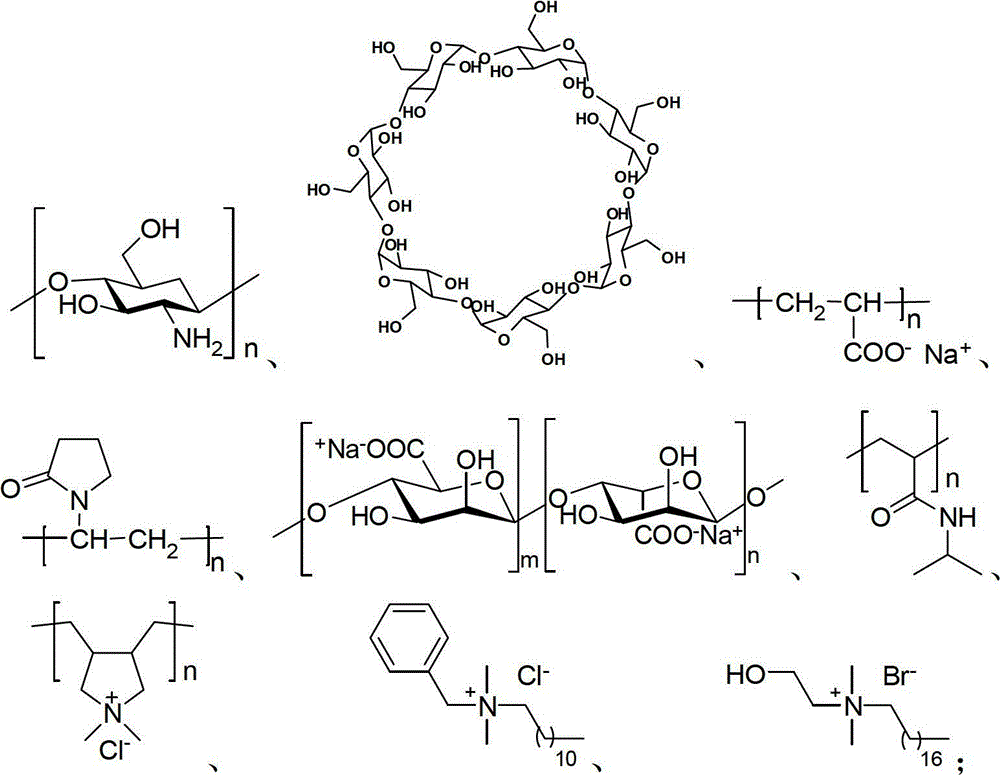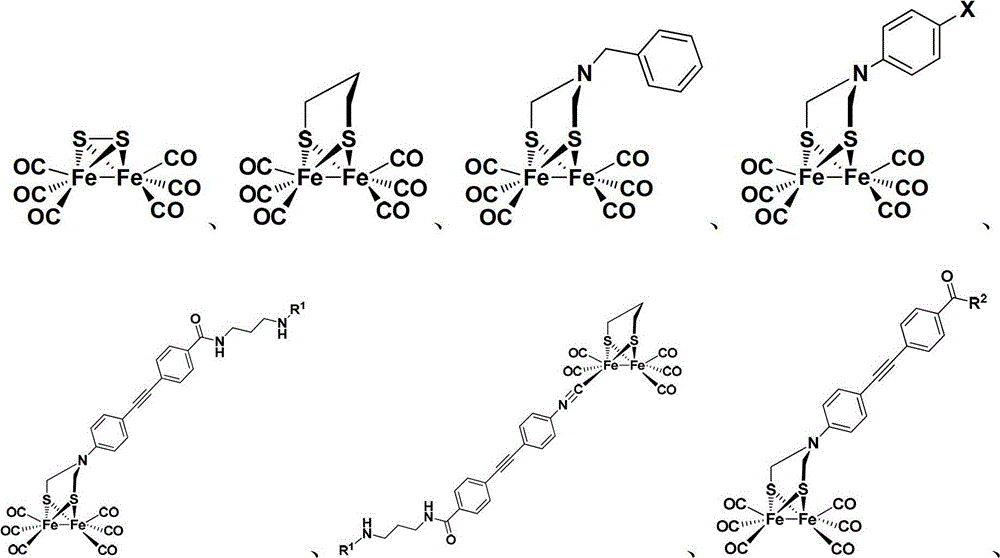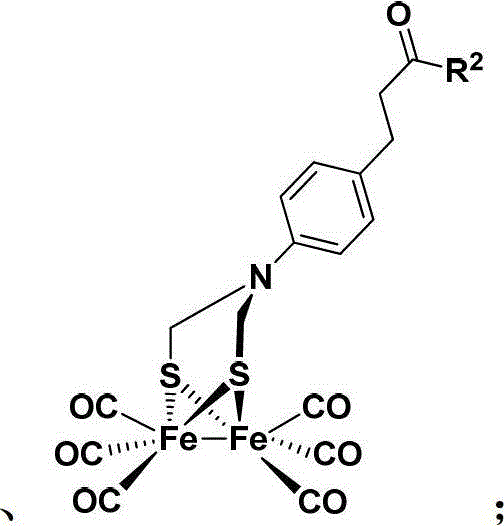Photocatalytic hydrogen production system and hydrogen gas preparation method thereof
A photocatalytic and systematic technology, applied in the production of hydrogen, etc., can solve the problems of loss of catalytic activity, cost increase, and complex structure, etc., and achieve the effects of easy operation, improved hydrogen production efficiency, and increased hydrogen production
- Summary
- Abstract
- Description
- Claims
- Application Information
AI Technical Summary
Problems solved by technology
Method used
Image
Examples
Embodiment 1
[0057] A photocatalytic hydrogen production system using a stabilizer and a method for producing hydrogen: wherein the concentration of the polycarbonyl diiron disulfide cluster compound is 1.00×10 -5 mol / L; the concentration of MPA-CdTe QDs (as Cd 2+ gauge) is 7.00 x 10 -5 mol / L; stabilizer chitosan concentration (calculated as chitosan monomer) is 3.00×10 -3 mol / L; ascorbic acid (H 2 A) The concentration is 8.75×10 -2 mol / L; the size of MPA-CdTe QDs is 3.4nm; the solvent is a mixed solvent of methanol and water with a volume ratio of 1:1; the total sample volume is 10mL; the pH of the sample before irradiation is 3.8.
[0058] The method for preparing hydrogen by using the above photocatalytic hydrogen production system is: irradiate the sample with visible light of λ>400nm, and monitor the sample by gas spectrometer every 2 hours of light; after 28 hours of light, the calculated hydrogen production of the sample is about 3.63mL, The hydrogen turnover number (TON) calcul...
Embodiment 2
[0062] A photocatalytic hydrogen production system using a stabilizer and a method for producing hydrogen: wherein the concentration of the polycarbonyl diiron disulfide cluster compound is 1.00×10 -5 mol / L; the concentration of MPA-CdTe QDs (as Cd 2+ gauge) is 7.00 x 10 -5 mol / L; stabilizer chitosan concentration (calculated as chitosan monomer) is 3.00×10 -3 mol / L; ascorbic acid (H 2 A) The concentration is 8.75×10 -2 mol / L; the size of MPA-CdTe QDs is 3.4nm; the solvent is a mixed solvent of methanol and water with a volume ratio of 1:1; the total sample volume is 10mL; the pH of the sample before irradiation is 3.8.
[0063] The method for preparing hydrogen by using the above photocatalytic hydrogen production system is: irradiate the sample with visible light of λ>400nm, and monitor the sample by gas spectrometer every 4 hours of light; after 24 hours of light, the calculated hydrogen production of the sample is about 1.67mL ( TON=748); the sample continued to produc...
Embodiment 3
[0067] A photocatalytic hydrogen production system using a stabilizer and a method for producing hydrogen: wherein the concentration of the polycarbonyl diiron disulfide cluster compound is 1.00×10 -5 mol / L; the concentration of MPA-CdTe QDs (as Cd 2+ gauge) is 7.00 x 10 -5 mol / L; stabilizer chitosan concentration (calculated as chitosan monomer) is 3.00×10 -3 mol / L; ascorbic acid (H 2 A) The concentration is 8.75×10 -2 mol / L; the size of MPA-CdTe QDs is 3.4nm; the solvent is a mixed solvent of methanol and water with a volume ratio of 1:1; the total sample volume is 10mL; the pH of the sample before irradiation is 3.8.
[0068] The method for preparing hydrogen by using the above photocatalytic hydrogen production system is: irradiate the sample with visible light of λ>400nm, and monitor the sample once every 4 hours of illumination; after 24 hours of illumination, the calculated hydrogen production of the sample is about 0.64mL ( TON=286); the sample continued to produce...
PUM
| Property | Measurement | Unit |
|---|---|---|
| size | aaaaa | aaaaa |
Abstract
Description
Claims
Application Information
 Login to View More
Login to View More - R&D
- Intellectual Property
- Life Sciences
- Materials
- Tech Scout
- Unparalleled Data Quality
- Higher Quality Content
- 60% Fewer Hallucinations
Browse by: Latest US Patents, China's latest patents, Technical Efficacy Thesaurus, Application Domain, Technology Topic, Popular Technical Reports.
© 2025 PatSnap. All rights reserved.Legal|Privacy policy|Modern Slavery Act Transparency Statement|Sitemap|About US| Contact US: help@patsnap.com



